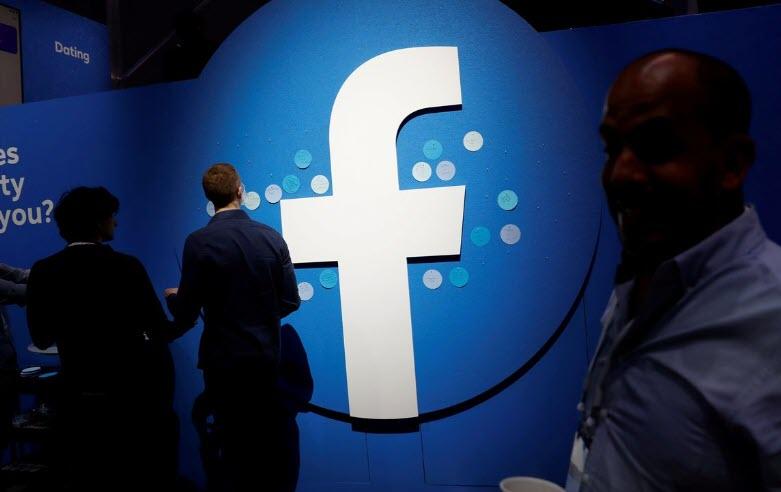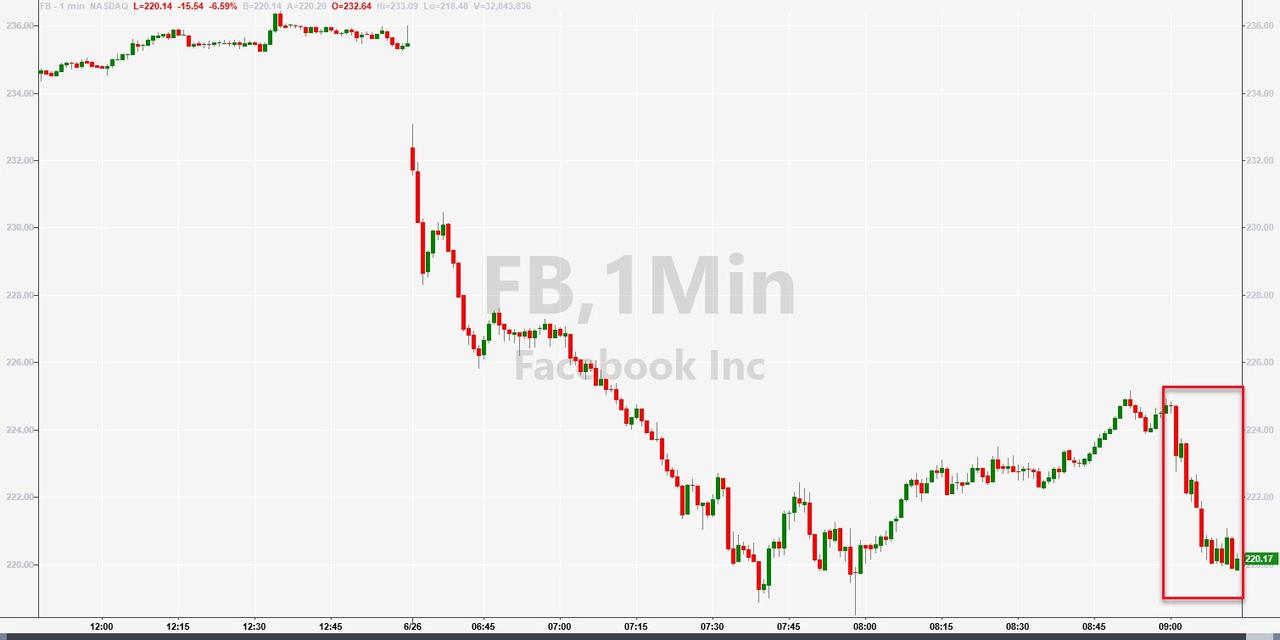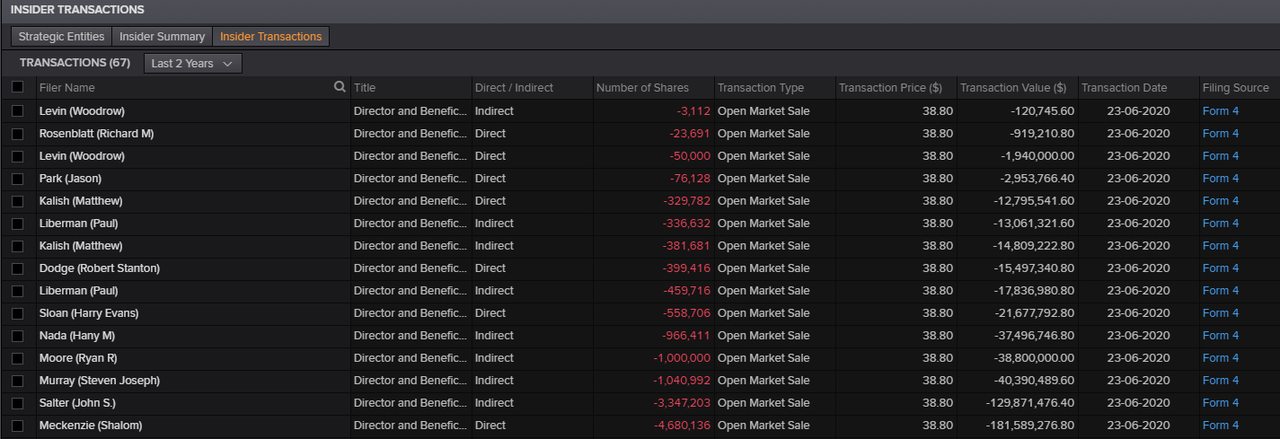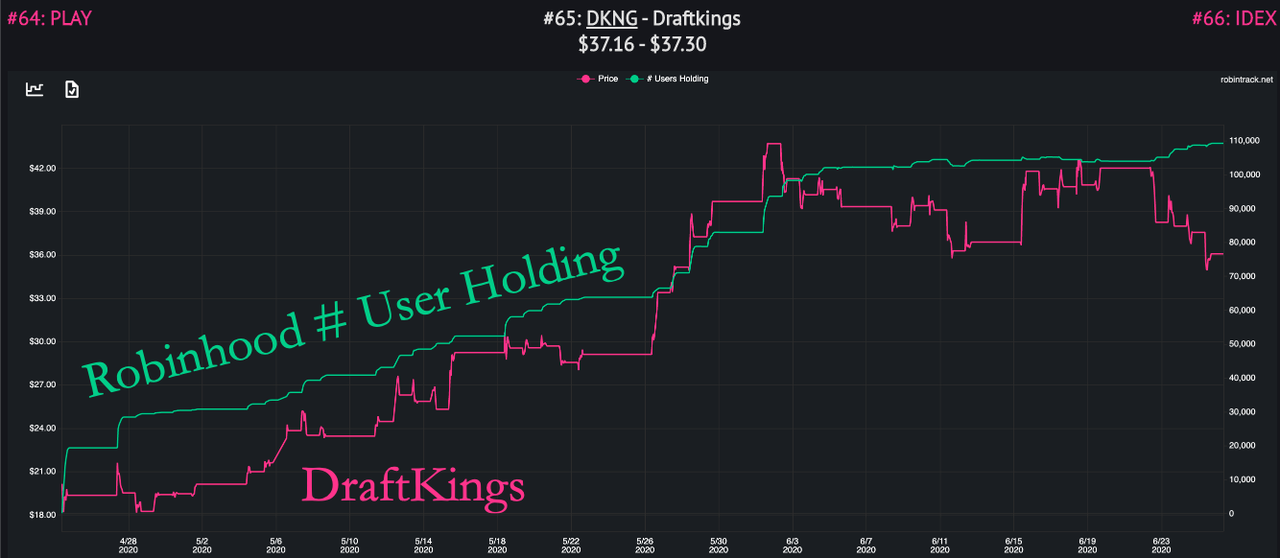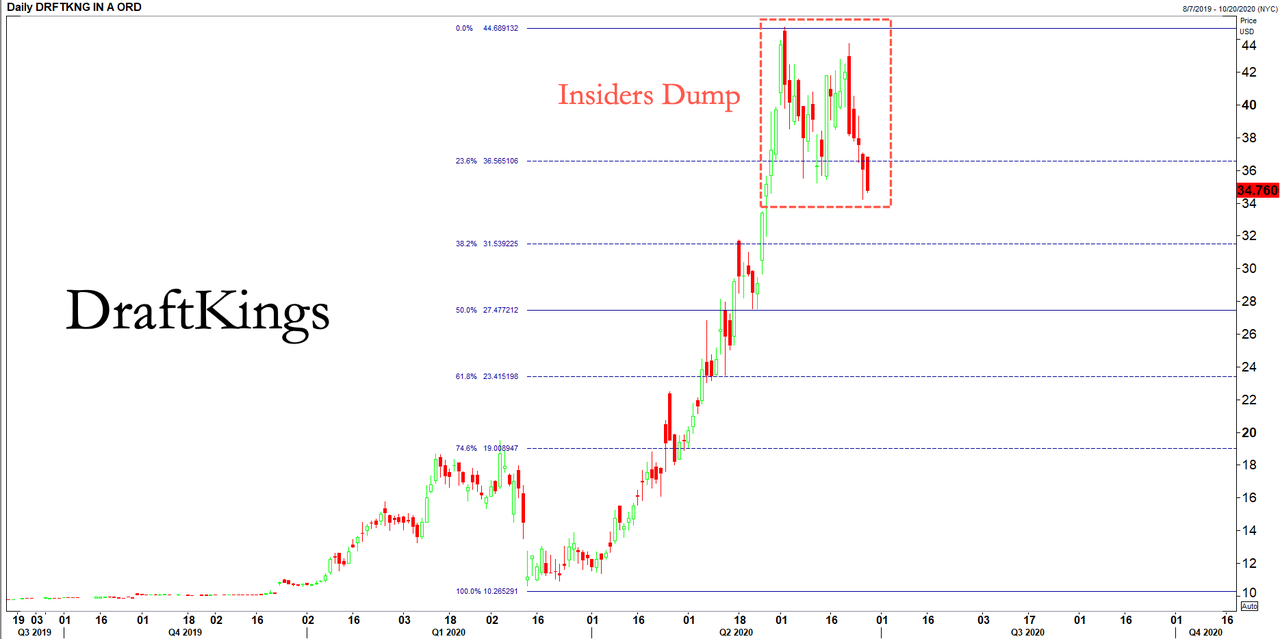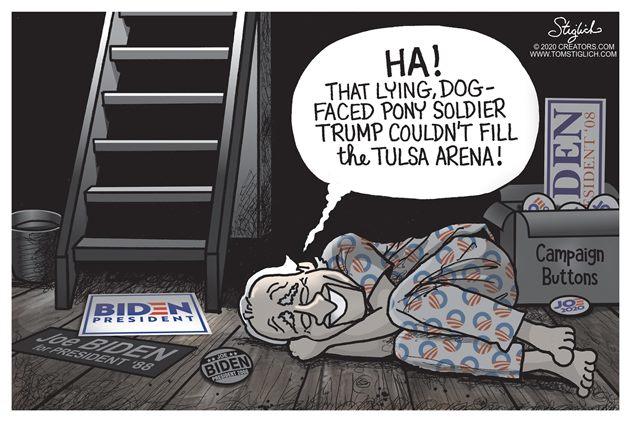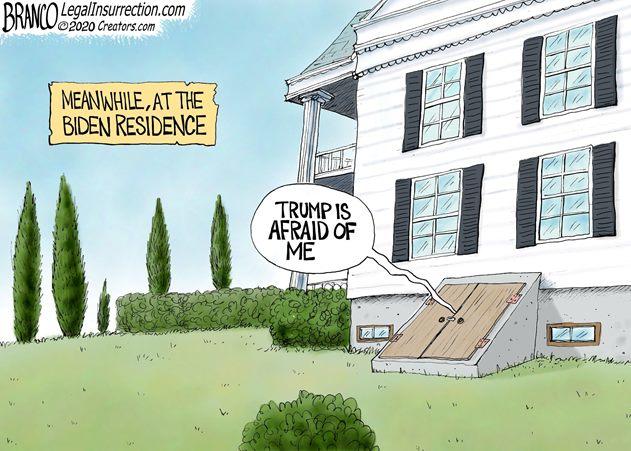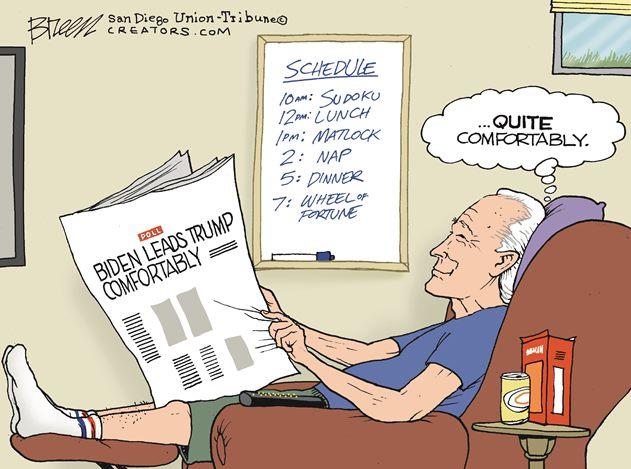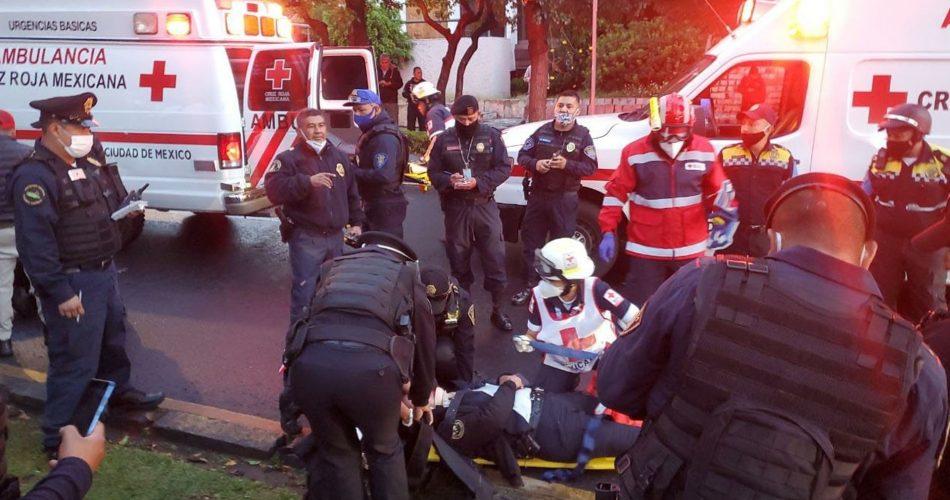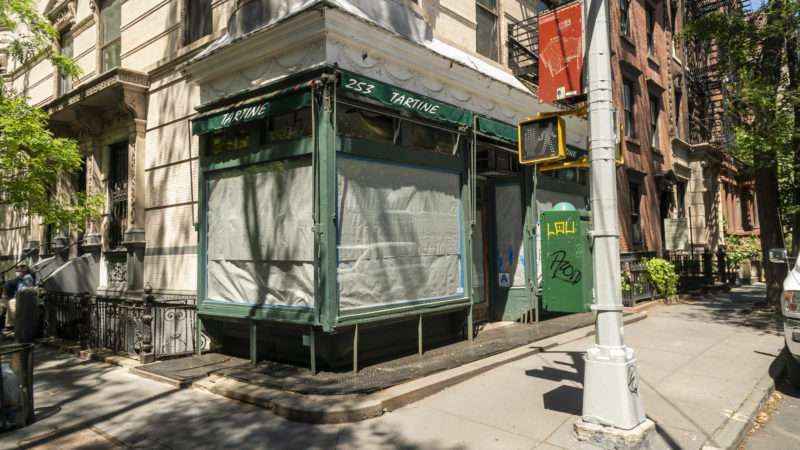From Judge Gary Sharpe’s opinion today in Soos v. Cuomo (N.D.N.Y.):
Pending is an application for preliminary injunctive relief filed by plaintiffs Reverend Steven Soos, Reverend Nicholas Stamos, Daniel Schonbrun, Elchanan Perr, and Mayer Mayerfeld … seek an order restraining and enjoining defendants Andrew M. Cuomo, Governor of the State of New York; Letitia James, Attorney General of the State of New York; and Bill de Blasio, Mayor of the City of New York: (1) from enforcing any gathering limits to outdoor religious gatherings; and (2) from imposing any limitation on indoor gathering … for religious gatherings in parity with the 100% occupancy allowed for favored “essential businesses,” day camps and special education classes, or, alternatively, at least 50% occupancy in keeping with what is permitted for “non-essential” businesses and every other indoor activity allowed to continue under Phases Two and Three except religious activity, which alone is still arbitrarily confined to 25% occupancy.
The judge’s statement of the facts noted the government’s response to the anti-racism protests:
Mass race-related protests have erupted across the nation, including in the State of New York, in response to the death of African-American George Floyd on May 25, 2020. Protesters, sometimes in groups of thousands, have taken to the streets of New York City as well as other major cities in the State of New York. During this time, a “social media campaign” has encouraged theaters in New York, which are to be closed until “Phase Four” of New York’s reopening plan, to open their lobbies and restrooms for protesters.
[1.] [Response to the Protests by] Governor Cuomo
During a press conference held on June 1, 2020, when asked if he would “suggest people not go out and protest,” Governor Cuomo answered: “No, I think you can protest, but do it smartly and intelligently…. There were protests all across the country. Protest. Just be smart about it. With this virus, you can do many things now as long as you’re smart about it, right? You can reopen, you can go into a store and you can do a lot of things, just be smart.”
When asked what the difference is “between protesting and a business, say, in the city who wants to reopen smartly if it’s not at the phase yet that they’re technically allowed to,” Governor Cuomo answered: “Well, that’s where we’re at, but it has to be a business where you can be smart. Be smart, meaning socially distant. You don’t conduct business in a way where you have people within six feet. You have to wear the mask. You have to do the hand sanitizer. That’s where we’re going to be.”
During a press conference held on June 4, 2020, when asked about his reopening plans, and if there was a way to “allow high school graduation ceremonies with social distancing,” Governor Cuomo remarked: “Did you hear anything that we’ve been talking about for the past 96 days? … [Y]eah I know everybody wants to go to a high school graduation, I get it. Not if they’re going to die.” When asked how he is able to justify opening a patio for outside dining, but will not allow high school graduation ceremonies with social distancing, Governor Cuomo answered: “What difference does it make? … The issue is a public health issue and you don’t want people sick and dead. It’s about death, it’s about balancing the risk versus the reward, balancing the desires and wants versus the consequences.”
During this same press briefing, Governor Cuomo also stated, “I want to thank the protestors…. I stand with the protestors on the point that we need meaningful reform.”
When explaining the modification of non-essential gatherings for houses of worship to no greater than 25% of the indoor capacity of such location, provided in Order 202.38, Governor Cuomo explained, in part: “We are going to accelerate the opening of temples, mosques, [and] churches…. 25 percent occupancy is not as easy as 100 percent occupancy but 100 percent occupancy is a mass gathering and you really can’t do social distancing.” He further advised New Yorkers to “[b]e smart. It does not mean you go to a temple or a mosque and you sit right next to a person. You have to socially distance.”
[2.] [Response to Earlier Gatherings and Then to the Protests by] Mayor de Blasio
On April 28, Mayor de Blasio appeared in Williamsburg at a Jewish funeral gathering, which was dispersed by the New York Police Department (NYPD). Via Twitter, Mayor de Blasio wrote: “Something absolutely unacceptable happened in Williamsburg tonite [sic]: a large funeral gathering in the middle of this pandemic. When I heard, I went there myself to ensure the crowd was dispersed. And what I saw WILL NOT be tolerated so long as we are fighting the Coronavirus.” This was followed by another tweet: “My message to the Jewish community, and all communities, is this simple: the time for warnings has passed. I have instructed the NYPD to proceed immediately to summons or even arrest those who gather in large groups. This is about stopping this disease and saving lives. Period.”
During a June 2, 2020 media conference, when asked: “What about the retail store owner facing imminent financial ruin or the religious person who cannot [attend a] house of worship? What about their pain and anger?” Mayor de Blasio replied, in part: “When you see a nation, an entire nation simultaneously grappling with an extraordinary crisis seeded in 400 years of American racism[,] I’m sorry[,] [t]hat is not the same question[] as the understandably aggrieved store owner, or the devout religious person who wants to go back to services.”
On June 4, 2020, Mayor de Blasio, without a mask, attended and addressed a political gathering, held in memory of George Floyd. Neither the ten-person limit on outdoor gatherings, nor the social distancing protocols, were adhered to….
The court then turned to the legal analysis:
Having carefully reviewed the relevant issues, and with a firm understanding that the executive branch response to the pandemic has presented issues with a degree of complexity that is unrivaled in recent history, it is plain to this court that the broad limits of that executive latitude have been exceeded. That is not to say that Governor Cuomo or Mayor de Blasio have utterly failed in their reaction to COVID-19. To the contrary, the State of New York, at the moment anyway, is among the best situated states in terms of infection and mortality rates. While there is more clarity every day with respect to the best practices for slowing the spread of COVID-19, there is wide and reasonable disagreement about exactly how to implement rules and regulations to achieve those ends, and, as is particularly present in this case, even more so with respect to reopening in a way that promotes safety, economic viability, and the enjoyment of all the rights that the people of this country and the State of New York are guaranteed. As the Chief Justice recognized in Newsom, it is not the judiciary’s role to second guess the likes of Governor Cuomo or Mayor de Blasio when it comes to decisions they make in such troubling times, that is, until those decisions result in the curtailment of fundamental rights without compelling justification….
“The general applicability requirement [under the Free Exercise Clause] prohibits the government from ‘in a selective manner impos[ing] burdens only on conduct motivated by religious belief.'” “It ‘protect[s] religious observers against unequal treatment, and inequality [that] results when a legislature decides that the governmental interests it seeks to advance are worthy of being pursued only against conduct with a religious motivation.'” “While ‘[a]ll laws are selective to some extent, … categories of selection are of paramount concern when a law has the incidental effect of burdening religious practice.'” “A law is therefore not generally applicable if it is substantially underinclusive such that it regulates religious conduct while failing to regulate secular conduct that is at least as harmful to the legitimate government interests purportedly justifying it.”
“Individualized exemptions are [another] way in which a law can fail to be generally applicable.” In Smith, the Supreme Court explained that, “where the State has in place a system of individual exemptions, it may not refuse to extend that system to cases of ‘religious hardship’ without compelling reason.” Case law within this Circuit supports the notion that individualized de facto exemptions can demonstrate that a challenged law is not generally applicable, and is therefore subject to heightened scrutiny. Along these lines, when the challenged law does not carve out an exemption on its face, the history of enforcement is relevant to the existence of an exemption….
The State argues, in overly-simplistic fashion, that the challenged laws only incidentally impose a burden on religious exercise, and they are neutral and generally applicable, and therefore, only rational basis need be shown, which is self-evident: preventing the spread of COVID-19.
The State was silent with respect to the mass race protests in its written submissions until it filed a supplemental memorandum of law following the return on the motion. In that supplement, the State argues that Governor Cuomo’s “political speech” cannot support a de facto exemption vis-à-vis the mass race protests.
The City initially responded with respect to only the ten-person indoor/outdoor limitation that was applicable in New York City during Phase 1. It argues, like the State, that the challenged laws are neutral and generally applicable, but, unlike the State, the City initially acknowledged the mass race protests and contended that they are not comparable because protests occur outside and religious activity typically occurs inside. Further the City asserts, relying on Calvary Chapel Dayton Valley v. Sisolak (D. Nev. June 11, 2020), that the enforcement of the challenged laws against protesters creates safety concerns and, absent clear patterns of unconstitutional selective enforcement, the court should not second guess the State’s determinations. In its supplemental submission, the City contends that the orthodox Jewish plaintiffs “may no longer seek redress for their alleged injuries” because, as of June 22, New York City has entered Phase 2, which lifts the ten-person indoor/outdoor limitation and imposes a 25% indoor capacity limitation. The City also amplifies its contention, explained for the first time during the motion return, that a de facto exemption has not been created for mass race protesters.
In light of the developments and natural progression of the challenged laws since the motion return, the restrictions and limitations at issue are: (1) a 25% indoor capacity limitation for Phases 2 and 3; (2) a twenty-five-person outdoor gathering limit in Phase 3 locations; and (3) a ten-person outdoor gathering limit in Phase 1 and 2 locations. And the City’s argument that Schonbrun, Perr, and Mayerfeld “may no longer seek redress” because their region has gone into Phase 2, is rejected. While it is true that their allegations are tailored to the ten-person indoor/outdoor limitation that existed when this matter was commenced, it is readily and reasonably inferable from their allegations that the 25% indoor capacity limitation would continue to burden their free exercise of religion.
The court then held that the restrictions likely weren’t generally applicable, and thus likely violated the Free Exercise Clause:
Assuming, without deciding, that the challenged laws are neutral, plaintiffs have demonstrated a likelihood of success on the merits with respect to their free exercise claim because it appears that the challenged laws are not generally applicable, and that they would fail strict scrutiny.
[1.] 25% Indoor Capacity Limitation
On its face, the 25% indoor capacity limitation applies only to houses of worship. Indeed, that limitation is the only one of its kind in the tangle of executive orders and the Guidance Document that have been issued in response to the pandemic; in other words, no other secular entity, save for those that remain closed in their entirety until Phase 4 or beyond, are limited to only 25% capacity. The “nonessential businesses,” dubbed “Phase 2 industries” by executive order, that enjoy a 50% capacity limitation are, however, not justifiably different than houses of worship.
For example, offices, retail stores that are not inside of shopping malls, and salons were permitted to open at 50% capacity beginning in Phase 2. To a greater or lesser degree, the Phase 2 industries involve the congregation of people for a length of time. And restaurants in Phase 3 locations are permitted to open at 50% capacity indoors. Restaurant patrons sit and congregate with family and friends in close proximity for a lengthy period of time, and have close contact with their hosts and servers. Face coverings may be removed while seated. Additionally, special educational services will be permitted during “the summer term in school districts” with no indoor capacity limitations.
All of this is to demonstrate that these secular businesses/activities threaten defendants’ interest in slowing the spread of COVID-19 to a similar or greater degree than those of plaintiffs’, and demonstrate that the 25% indoor capacity limitation on houses of worship is underinclusive and triggers strict scrutiny review.
{There is also an arguable basis to find a de facto exemption in light of the open lobbies social media campaign. In light of the court’s conclusion that the 25% indoor capacity limitation is not generally applicable because it is underinclusive, it need not reach the individualized exemption argument. Admittedly, the basis of such an argument here is on far shakier footing, given the lack of acknowledgment or endorsement by defendants, than it is with respect to the mass race protests discussed below.}
[2.] Twenty-Five-Person Outdoor Limitation in Phase 3; Ten-Person Outdoor Limitation in Phases 1 and 2
Despite the State’s claim that enforcement power rests with local authorities in an effort to show that selective enforcement against mass race protesters is not a de facto exemption imposed by Governor Cuomo or Attorney General James, Governor Cuomo clearly has authority over the New York State Police and broad powers of enforcement. And, in any case, Governor Cuomo’s comments, which applauded and encouraged protesting and discouraged others from violating the outdoor limitations, likely demonstrate the creation of a de facto exemption.
Mayor de Blasio is a “local authority” with clear enforcement power and has at his disposal one of the largest municipal police departments in the world, and has also actively encouraged participation in protests and openly discouraged religious gatherings and threatened religious worshipers as set forth above. The City’s argument that temporary selective enforcement of the challenged laws with respect to mass race protests is a matter of public safety based on the rationale of Sisolak would perhaps be legitimate but for Mayor de Blasio’s simultaneous pro-protest/anti-religious gathering messages, which clearly undermine the legitimacy of the proffered reason for what seems to be a clear exemption, no matter the reason.
Governor Cuomo and Mayor de Blasio could have just as easily discouraged protests, short of condemning their message, in the name of public health and exercised discretion to suspend enforcement for public safety reasons instead of encouraging what they knew was a flagrant disregard of the outdoor limits and social distancing rules. They could have also been silent. But by acting as they did, Governor Cuomo and Mayor de Blasio sent a clear message that mass protests are deserving of preferential treatment.
Another case of individualized exemption seems even more obvious. The State has specifically authorized outdoor, in-person graduation ceremonies of no more than 150 people beginning today, June 26. This is an express exemption from the ten- or twenty-five-person outdoor limits that apply across Phases 1, 2, and 3, and the State must extend a similar exemption to plaintiffs absent a compelling reason to the contrary. And there is nothing materially different about a graduation ceremony and a religious gathering such that defendants’ justifications for a difference in treatment can be found compelling.
The judge therefore restrained the defendants
- from enforcing any indoor gathering limitations against plaintiffs greater than imposed for Phase 2 industries, provided that plaintiffs follow social distancing requirements as set forth in the applicable executive orders and guidance; and
- from enforcing [presumably, also just against plaintiffs -EV] any limitation for outdoor gatherings provided that participants in such gatherings follow social distancing requirements as set forth in the applicable executive orders and guidance ….

from Latest – Reason.com https://ift.tt/2Nz5dhy
via IFTTT

